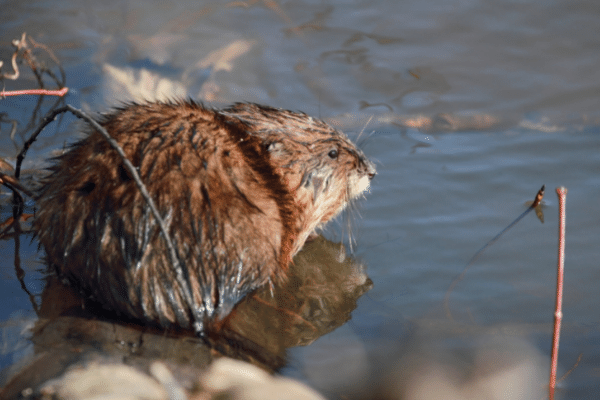- Home
- Muskrat Trapping
- Muskrat Facts
Muskrat Facts
This post may contain affiliate links so I earn a commission.
If you're interested in trapping muskrats, the first step is to learn a few muskrat facts.
Before you begin you should familiarize yourself with the animal and learn about their behavior.
What do they eat?
Are they common?
Understanding these basic concepts will help you understand the animal, and increase your odds of catching one in a trap.

Muskrats are popular to trap for a couple of reasons.
First, they're not very trap-shy so they're a perfect species for a beginner to learn from.
Second, they're abundant!
Since they're widely distributed throughout North America, nearly everyone has the opportunity to target them on your next trapline.
In fact, 48 states have a season that allows you to trap muskrats.
Muskrats are not just specific to North America either.
Parts of Europe, Asia and South America also have muskrat populations.
Muskrat Facts - Habitat And Characteristics
A muskrat is a versatile animal that can adapt to wide variety of climates, but the animal is very dependent on water.
Lakes, ponds, marshes and streams are all desirable places for a muskrat to live.
They're classified as a rodent because of their four incisor teeth in the front of their mouth and they weigh around 3 pounds.
Northern muskrats commonly weigh more and muskrats from southern climates can weigh less.

They have small front feet but their back feet are much bigger.
While their large back feet help them navigate in the water, they're not very agile on land and can appear slow and clumsy.
They have a long, nearly hairless tail that serves as a rudder in the water, and their dense brown colored fur traps air and prevents the muskrats skin from becoming wet while submerged.
Muskrats living in steams or rivers prefer to build a den inside the riverbank.
The burrow has an underwater entrance that leads up to a nest chamber that's above the water level inside the bank.
Muskrats living in marshes often build small huts that resemble a haystack.
They use surrounding vegetation, mud and cattails for construction.
Food Choice - Muskrat Facts
Muskrats are vegetarians and will eat almost anything growing nearby.
Roots, stems and bulbs are all consumed but cattails make up the majority of their diet.

In the wintertime, muskrats do not have a food storage area so they must swim under the ice in search of food.
If the food source is too far from their hut, they will make a "push-up" which is a feeding shelter on the ice.
Once they find food, the muskrats typically carry it in their mouth until they find an undercut bank or other covered area to stop and eat.
While most people believe muskrats are strictly nocturnal, they're actually very active throughout the day.
Management And Control
Muskrats do have natural predators and they're susceptible to disease, but loss of habitat due to drainage projects and loss of a water source is one of the major factors of a declining muskrat population.
For homeowners who are having problems with nuisance muskrats, some states allow the homeowner to trap or shoot muskrats that are causing damage to their property.
Since muskrats can have up to 5 litters per year and each litter can contain up to 5 or 6 kits, controlling the muskrat population through trapping is beneficial and important.
Overall - Muskrat Facts
With a basic understanding of where they live and what they eat, it's not hard to find an area to trap muskrats.
Remember, each state or country has different laws pertaining to the removal or trapping of muskrats.
Make sure to check you local laws before setting a trap or removing a nuisance muskrat.



